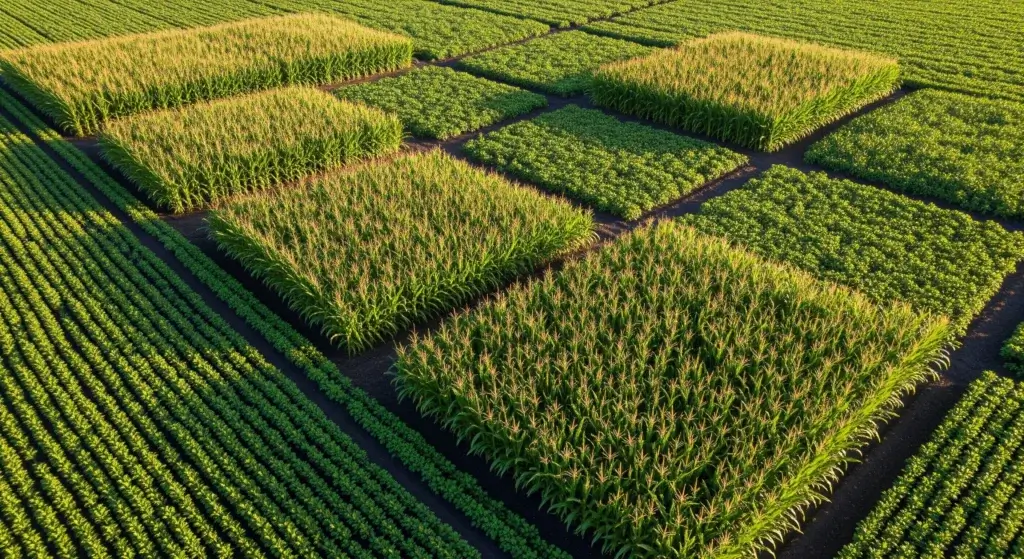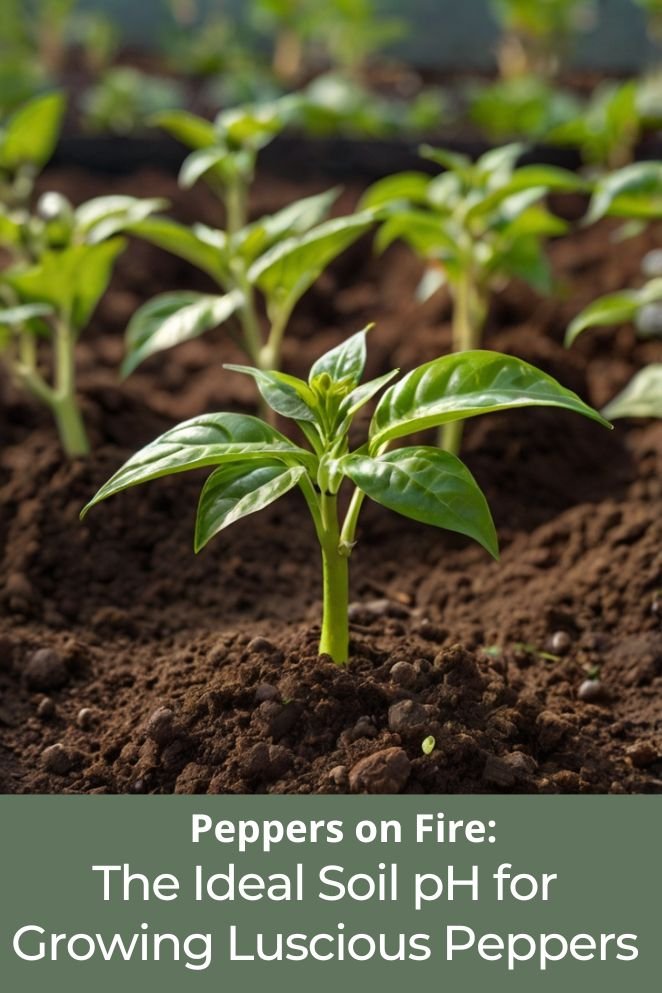
Growing peppers can be a rewarding experience, whether you’re a seasoned gardener or just starting out.
However, to get the best yields and healthiest plants, understanding the role of soil pH is crucial.
In this comprehensive guide, we’ll explore why soil pH matters for peppers, the ideal pH range, signs of pH problems, how to adjust your soil pH, and tips for maintaining optimal conditions.
Why is Soil pH Important for Peppers?
Soil pH measures the acidity or alkalinity of the soil, on a scale from 0 to 14, with 7 being neutral.
Values below 7 indicate acidic soil, while values above 7 indicate alkaline soil.
The pH level affects nutrient availability, microbial activity, and overall plant health.
For peppers, the right soil pH ensures that essential nutrients like nitrogen, phosphorus, and potassium are readily available.
If the pH is too high or too low, these nutrients can become locked in the soil, making them inaccessible to the plants.
This can lead to poor growth, reduced yields, and increased susceptibility to diseases.
- Read also: Turn Up the Heat! Secrets on How to Grow Peppers Hotter
- Read also: Peppers and Pals: A Guide to Companion Planting for Peppers
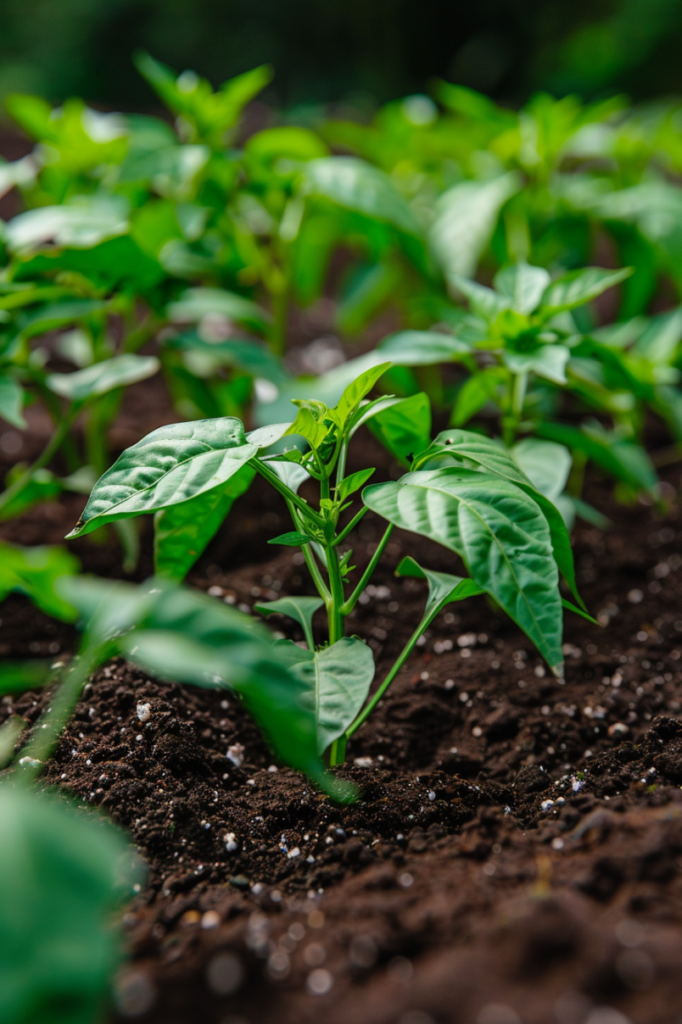
The Ideal Soil pH for Peppers
The ideal soil pH for peppers is between 6.0 and 7.0.
This range allows for optimal nutrient availability, and peppers can grow and thrive.
However, some pepper varieties may be more tolerant of slightly acidic or alkaline soils, so it’s essential to research the specific requirements of your pepper variety.
Signs of a pH Problem
If your pepper plants aren’t thriving, the soil pH might be the issue.
Here are some common signs to look out for:
Yellowing leaves
Yellow leaves often mean your plants aren’t getting enough nutrients.
This can happen if the soil pH is too high or too low, making it hard for the roots to absorb essential nutrients like nitrogen, iron, or magnesium.
Stunted growth
If your pepper plants aren’t growing as tall or as fast as they should, the soil pH might be off.
When the pH is not right, plants struggle to take up the nutrients they need, leading to slow and weak growth.
Poor fruit development
Small, misshapen, or fewer peppers than expected can be a sign of a pH imbalance.
Proper pH levels are crucial for nutrient absorption, which directly affects the quality and quantity of your fruit.
Leaf drop
If leaves are falling off your plants prematurely, it could be due to nutrient lockout caused by incorrect pH levels.
When the soil pH isn’t right, the plant can’t get the nutrients it needs, leading to stress and leaf drop.
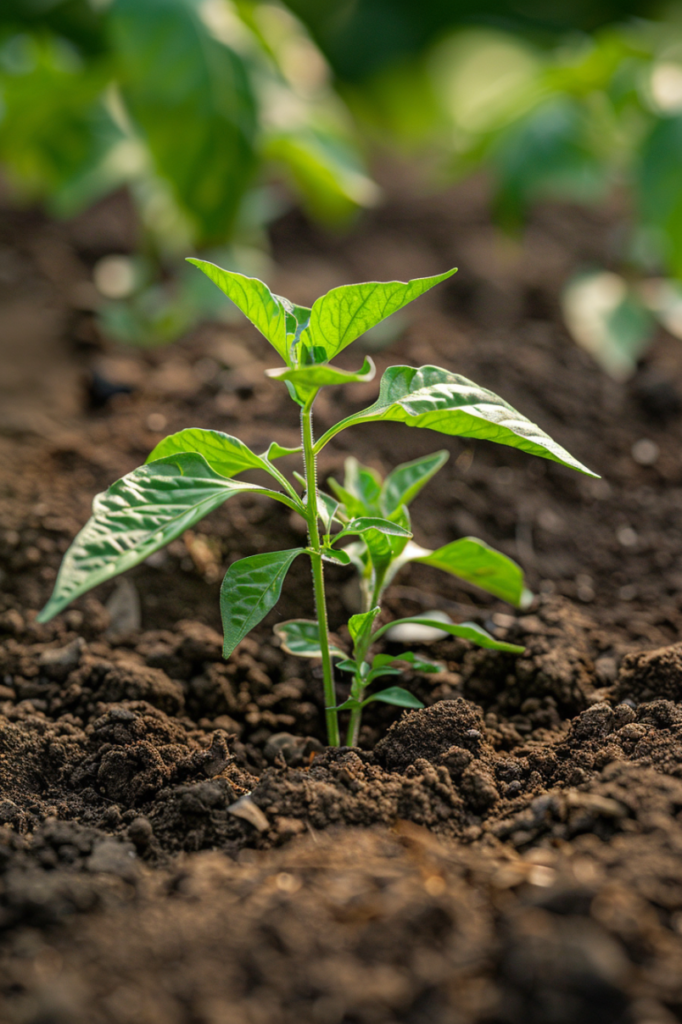
How to Adjust Your Soil pH for Peppers?
Before making any adjustments, it’s essential to test your soil pH.
Soil testing kits are available at garden centers, or you can send a sample to a local cooperative extension service for a more detailed analysis.
Adjusting pH for acidic soil (Below 6.0)
If your soil is too acidic, you’ll need to raise the pH. Here are a couple of effective methods:
- Lime: Adding agricultural lime (calcium carbonate) is one of the most common ways to raise soil pH.
- Wood ash: This can also increase soil pH, but use it sparingly and test your soil regularly. Wood ash can raise the pH quickly, so it’s easy to overdo it.
Adjusting pH for alkaline soil (Above 6.8)
If your soil is too alkaline, you’ll need to lower the pH.
Here are some options:
- Sulfur: Elemental sulfur or sulfur compounds can be used to lower soil pH. This process can take several months, so it’s best to plan ahead and be patient.
- Organic matter: Adding organic materials like compost, peat moss, or pine needles can help acidify the soil over time.
Detailed Steps for Adjusting Soil pH
Adjusting soil pH is crucial for optimal plant growth, especially for plants like peppers.
Here’s a detailed guide on how to do it:
- Test your soil: Start by using a soil testing kit to check your soil’s pH. Follow the kit’s instructions carefully or send a sample to a cooperative extension service for accurate results.
- Determine adjustment needs: Once you know your soil’s pH, decide if you need to raise or lower it. Aim for a pH between 6.0 and 6.8 for peppers.
- Select amendment method: Choose the right amendment based on your pH needs. Use lime or wood ash to raise pH, and sulfur or organic matter to lower pH.
- Calculate amounts: Consult product labels or gardening experts to determine how much amendment to use based on your soil type and current pH level.
- Apply amendments: Spread the chosen amendment evenly across your garden bed. Use a spreader for lime or wood ash, and distribute sulfur or organic matter by hand or with a shovel.
- Incorporate amendments: Mix the amendments thoroughly into the top 6 to 8 inches of soil using a garden fork or tiller.
- Water thoroughly: After applying amendments, water the garden bed well. This helps activate the amendment and initiates the pH adjustment process.
- Monitor pH: Check your soil pH again after a few weeks to see if it’s within the desired range. Periodically retest to ensure continued optimal pH levels for your peppers.
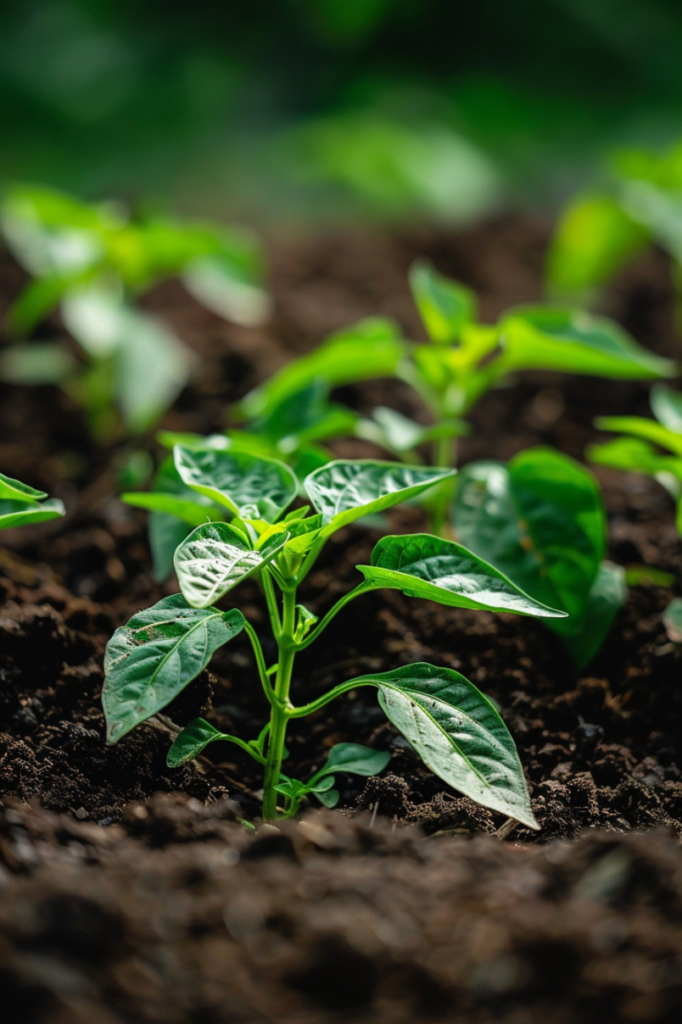
Tips for Maintaining Optimal Soil pH for Peppers
Once you’ve adjusted your soil pH, maintaining it is key to successful pepper growing.
Here are some tips:
Regular testing
It’s essential to test your soil pH regularly to ensure it stays between 6.0 and 6.8, which is perfect for peppers.
Test your soil at least once a year, ideally in spring before planting.
You can use a simple home testing kit or send a sample to a local extension service for a detailed analysis.
Consistent watering
Use water with a neutral pH to avoid altering your soil’s acidity.
Tap water can sometimes be hard, containing minerals that raise pH over time.
If possible, use rainwater or let tap water sit for 24 hours before using it on your plants.
Mulching
Apply organic mulches like straw or leaves around your pepper plants.
As these mulches break down, they release acids that help maintain soil acidity.
Mulching also retains soil moisture, suppresses weeds, and slowly releases nutrients.
Spread a layer of mulch around your plants, ensuring it doesn’t touch the stems directly to prevent rot.
Balanced fertilizers
Choose fertilizers specifically formulated for slightly acidic soils or labeled for vegetables and peppers.
These fertilizers help maintain the desired pH range without adding too much lime or alkaline substances.
Balanced fertilizers provide essential nutrients your peppers need for healthy growth and fruit development.

- Read also: Pepper Apocalypse? Prevent and Fix Blossom End Rot in Peppers
- Read also: Don’t Say Goodbye! How to Overwinter Your Pepper Plants
Conclusion
Maintaining the right soil pH is crucial for growing healthy, productive pepper plants.
By understanding the importance of soil pH, recognizing signs of pH problems, and knowing how to adjust and maintain it, you can ensure your peppers thrive.
Regular testing and mindful gardening practices will help you keep your soil in the optimal range, leading to bountiful harvests and happy plants.
FAQs
It’s a good practice to test your soil pH at least once a year, ideally in the spring before planting.
Yes, some household items like wood ash can raise pH, and coffee grounds or vinegar can lower pH. However, use them cautiously and test regularly.
Improper pH can lead to nutrient deficiencies, poor plant growth, and reduced yields. Your peppers may also be more susceptible to diseases.
Yes, improper pH can affect nutrient uptake, which in turn can influence the flavor and quality of the peppers.
Some plants like clover can improve soil quality, but they typically don’t significantly alter pH. Organic mulches and compost are better for gradual pH adjustment.



